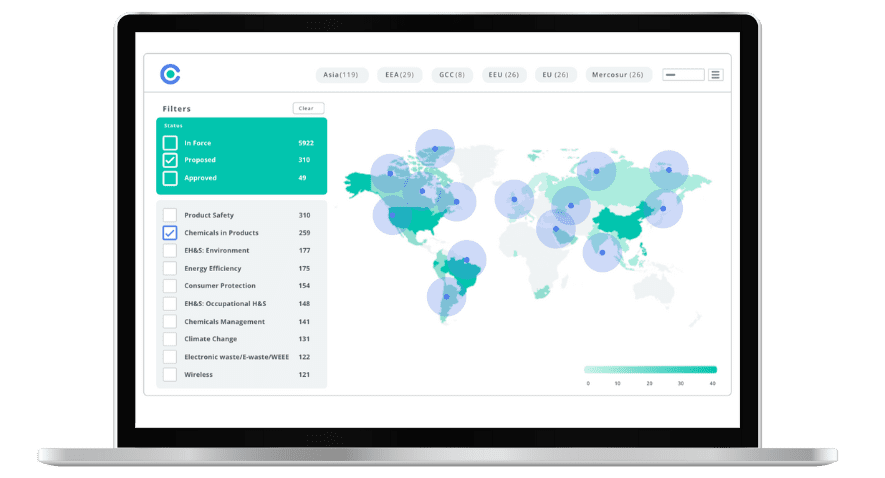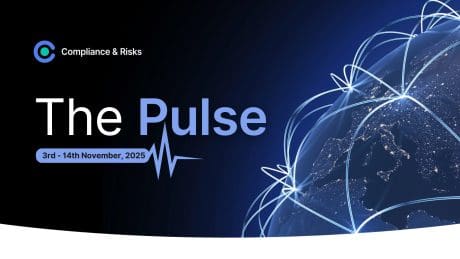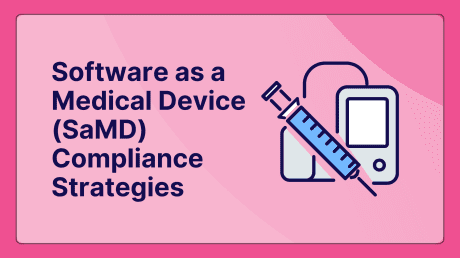
Beyond the Binder: Building an Audit-Ready Compliance Evidence System That Stands Up in Court

THIS BLOG WAS WRITTEN BY THE COMPLIANCE & RISKS MARKETING TEAM TO INFORM AND ENGAGE. HOWEVER, COMPLEX REGULATORY QUESTIONS REQUIRE SPECIALIST KNOWLEDGE. TO GET ACCURATE, EXPERT ANSWERS, PLEASE CLICK “ASK AN EXPERT.”
When a regulatory audit notification arrives, compliance teams face an immediate and daunting challenge: assembling comprehensive documentation that proves due diligence across complex product portfolios and global operations.
The pressure intensifies quickly. Organizations must locate supplier declarations from previous quarters, trace approval chains for component modifications, and verify documentation consistency across regional operations. What initially appeared to be an organized compliance infrastructure often reveals itself as a fragmented collection of spreadsheets, email archives, and disconnected file repositories.
This challenge is widespread and consequential. According to KPMG, 69% of CEOs now identify regulatory risk as a top threat to their company’s growth. With 55% of companies having faced regulatory penalties in the past two years (PwC, 2023), the implications extend far beyond financial fines to encompass brand reputation, operational continuity, and legal liability where compliance evidence becomes critical.
This article provides a strategic framework for developing audit-ready compliance evidence systems. Rather than incremental improvements to existing documentation practices, we examine how to architect comprehensive evidence management infrastructure that delivers irrefutable proof of due diligence and withstands rigorous regulatory scrutiny.
Table of Contents
- Why Traditional Documentation Systems Create Regulatory Risk
- The Anatomy of an Audit-Proof Evidence Architecture
- From Reactive Scrambling to Proactive Readiness: Your Audit Playbook
- Key Takeaways: Your Audit Readiness Checklist
- Frequently Asked Questions
- Building Enterprise-Grade Evidence Infrastructure
Why Traditional Documentation Systems Create Regulatory Risk
The discovery of conflicting versions of finalized compliance documents signals a fundamental systemic weakness rather than an isolated documentation error. For many organizations, compliance management relies on fragmented tools including email chains, shared network drives, decentralized spreadsheets, and legacy content management systems with inconsistent maintenance.
This fragmentation directly undermines audit success. Recent research from EY indicates that 82% of compliance leaders identify data fragmentation as a significant operational challenge. When evidence exists across disconnected repositories, organizations cannot demonstrate consistent, methodical compliance processes. Instead, audit responses appear reactive and disorganized, assembled hastily rather than maintained systematically.
The operational costs are substantial. The Association of Corporate Counsel reports that in-house legal teams dedicate 20% of their time to locating and consolidating compliance information. Gartner research quantifies this inefficiency further, demonstrating that manual evidence collection for audits costs three to five times more than automated, centralized systems.
This approach is increasingly untenable. With 78% of organizations expanding compliance budgets (Deloitte, 2022), executive leadership demands not only compliance assurance but efficient, defensible proof mechanisms. Incremental investment in manual processes fails to address fundamental architectural limitations. Sustainable solutions require comprehensive infrastructure redesign.
The Anatomy of an Audit-Proof Evidence Architecture
Effective compliance evidence systems function as dynamic enforcement environments rather than passive document repositories. These platforms actively maintain compliance processes while creating unassailable audit trails. The objective is establishing a verified single source of truth accessible to all stakeholders from engineering through legal operations.
Centralized compliance management has evolved from operational preference to business necessity and represents the foundation of contemporary risk management. The following principles constitute essential requirements for robust evidence architecture.
Bedrock Principle #1: Immutable Chain of Custody
When auditors request approval documentation and timing verification, organizations require definitive, system-generated records rather than approximations based on institutional memory.
Immutable chain of custody ensures automatic logging of every evidence interaction: uploads, access events, approvals, and modifications. These logs are permanent and tamper-proof, functioning as digital notarization that establishes complete process history and demonstrates procedural integrity.
Regulatory audits specifically seek process vulnerabilities. Comprehensive chain of custody documentation eliminates ambiguity by proving that compliance activities follow deliberate, tracked, and auditable protocols at every stage. This becomes particularly critical when managing complex regulations across multiple jurisdictions, where demonstrable process consistency significantly influences audit outcomes.
Bedrock Principle #2: Granular Role-Based Access Control
Effective access management ensures that system permissions align precisely with organizational responsibilities. Marketing personnel should not possess editing rights for critical material compliance declarations. While this principle appears self-evident, traditional shared drive architectures typically implement binary permission structures.
Granular role-based access control restricts individual actions to those appropriate for specific organizational roles. Suppliers receive permission to upload declarations through designated portals. Compliance managers can review and approve these submissions. Engineers access approved declarations in read-only mode. Temporary auditor accounts provide view-only access to curated final documentation without exposing internal communications or draft materials.
This approach prioritizes data integrity over information restriction. Role-based access prevents inadvertent modifications, unauthorized approvals, and information security breaches. The system enforces that qualified personnel execute appropriate actions at proper times, with technical controls ensuring policy compliance.
Bedrock Principle #3: Unquestionable Timestamping
Regulatory audits frequently center on temporal compliance verification: demonstrating regulatory adherence at specific historical dates. This proof remains impossible when evidence relies on file system metadata or manual date entry in spreadsheets.
Robust platforms apply server-side, immutable timestamps to all actions. Document uploads, approvals, and product associations receive precise, user-independent date and time stamps. This creates verifiable evidence of compliance posture at any historical point, transforming compliance assertions from subjective belief into objective, system-of-record proof.
From Reactive Scrambling to Proactive Readiness: Your Audit Playbook
Appropriate technical architecture establishes the foundation, but operational excellence requires cultivating proactive audit readiness across the organization. The strategic objective is transforming audits into routine administrative events rather than organizational emergencies – accomplished through systematic preparation and pre-configured evidence packages from trusted systems.
The Power of Pre-Configured Audit Packages
Consider a regulatory request for comprehensive RoHS compliance evidence covering EU product sales across 18 months. Manual systems trigger extensive document retrieval efforts spanning weeks. Purpose-built evidence management platforms generate complete responses through automated reporting.
Pre-configured audit packages represent curated evidence collections mapped directly to specific regulations, standards, or product lines. Because documentation including supplier declarations, test reports, and technical files maintains systematic linkage to requirements and products within the platform, comprehensive evidence package generation requires minimal manual intervention.
This capability proves essential when navigating global product compliance regulations. Evidence requirements for REACH differ substantially from California Prop 65 mandates. Sophisticated systems enable advance package configuration, ensuring preparedness for any regulatory inquiry across product safety, environmental directives, or emerging sustainability reporting standards.
Mastering the Game with Mock Audit Simulations
High-stakes compliance audits warrant preparation equivalent to their potential impact. Organizations routinely conduct practice exercises before critical business events, and regulatory audits merit identical rigor.
Mock audits provide comprehensive stress testing for personnel, processes, and systems, simulating audit pressure and unpredictability rather than perfunctory checklist reviews.
Implementation involves designating a cross-functional “Red Team” to assume aggressive auditor roles. Provide this team with specific regulatory scope and impose realistic evidence request deadlines. This tests system capabilities: response time for data retrieval, evidence completeness, and access control effectiveness. The simulation immediately reveals process vulnerabilities, whether they stem from training gaps, missing data, or workflow constraints.
Regular simulation exercises build organizational capability and confidence. When formal audit notifications arrive, teams respond with practiced efficiency rather than reactive crisis management.
The Unsung Hero: Pre-Audit Data Cleansing
Sophisticated compliance programs distinguish themselves through systematic data hygiene practices. Auditors should encounter clean, relevant, finalized evidence exclusively, never accessing draft materials, internal deliberations, or obsolete documentation that invites misinterpretation.
Pre-audit data cleansing constitutes a recurring review process for evidence repositories, encompassing several key activities. Organizations must archive superseded documents such as outdated supplier declarations, resolve contradictions to ensure engineering specifications align with supplier material disclosures, and validate metadata by verifying that documentation maintains accurate tagging for associated products, regulations, and requirements.
This practice enhances transparency rather than obscuring information. It presents clear, concise, accurate compliance portraits while preventing auditors from pursuing tangential inquiries based on confusing or irrelevant materials, ultimately reducing audit duration and organizational risk exposure.
Key Takeaways: Your Audit Readiness Checklist
What is an audit-ready compliance evidence system? It is a centralized platform that manages compliance documentation with an immutable chain of custody, role-based access control, and verifiable timestamping to provide irrefutable proof of due diligence.
How do you ensure chain of custody for compliance data? An automated system should log every interaction with a piece of evidence – uploads, views, approvals, and changes – in a permanent, un-editable record.
Why is role-based access control important for audits? It ensures data integrity by preventing unauthorized or accidental changes to evidence, restricting actions to only those qualified and responsible for them.
How do you prepare for a regulatory audit? Go beyond data collection. Use your system to create pre-configured audit packages for specific regulations, run regular mock audit simulations to test your processes, and perform data cleansing to ensure clarity and accuracy.
Frequently Asked Questions
- Q: Are shared drives and spreadsheets sufficient for compliance evidence management?
Traditional file management systems function adequately until they encounter stress scenarios. These approaches remain vulnerable to human error, lack verifiable chain of custody, and generate substantial management overhead. IBM research indicates that compliance-related data breaches average $4.62 million in costs (2023). Dedicated compliance platforms represent risk mitigation investments rather than discretionary expenses, simultaneously delivering significant operational efficiency gains. - Q: How can resource-constrained compliance teams implement sophisticated evidence management systems?
Limited team capacity strengthens rather than diminishes the case for dedicated platforms. Automated systems eliminate time-intensive compliance management activities including document retrieval, version control, and report generation. These platforms function as team force multipliers, enabling compliance professionals to focus on high-value risk analysis rather than administrative tasks. - Q: What implementation approach minimizes disruption when transitioning from manual processes?
Comprehensive system replacement is unnecessary. Organizations should initiate implementation with their highest-risk area, whether that involves specific regulations like RoHS or particularly complex product lines. Begin by migrating evidence for a single focused area. Phased implementation demonstrates value rapidly, facilitates system learning, and builds momentum for broader deployment without disrupting ongoing operations. - Q: What measurable return on investment do dedicated compliance platforms deliver?
ROI manifests through two primary mechanisms. First, cost avoidance: preventing a single major regulatory penalty or legal action can justify platform investment many times over. Second, operational efficiency: automation reclaims thousands of personnel hours across engineering, legal, and compliance functions, redirecting capacity from administrative work toward innovation and growth initiatives.
Building Enterprise-Grade Evidence Infrastructure
The era of adequate-but-fragmented compliance documentation has concluded. Contemporary regulatory environments characterized by tightening requirements and aggressive enforcement make evidence quality the definitive defense. Systems constructed on spreadsheets and shared drives represent unstable foundations vulnerable to collapse under regulatory pressure.
Developing audit-ready evidence systems constitutes a strategic imperative rather than tactical enhancement. This transformation shifts organizational posture from reactive apprehension to proactive confidence, ensuring that audit notifications trigger efficient response protocols rather than crisis management. Organizations gain verifiable, defensible proof demonstrating that compliance is embedded fundamentally within operational practices rather than applied superficially.
The distinction between organizations thriving under regulatory scrutiny and those struggling often reduces to a single factor: evidence infrastructure strength. When organizations integrate regulations management, requirements management, and evidence management into centralized platforms, they create more than operational efficiency. They establish audit confidence and transform compliance from organizational vulnerability into competitive advantage that supports sustainable growth across global markets.
Experience the Future of ESG Compliance
The Compliance & Risks Sustainability Platform is available now with a 30-day free trial. Experience firsthand how AI-driven, human-verified intelligence transforms regulatory complexity into strategic clarity.
👉 Start your free trial today and see how your team can lead the future of ESG compliance.
The future of compliance is predictive, verifiable, and strategic. The only question is: Will you be leading it, or catching up to it?

Simplify Corporate Sustainability Compliance
Six months of research, done in 60 seconds. Cut through ESG chaos and act with clarity. Try C&R Sustainability Free.









